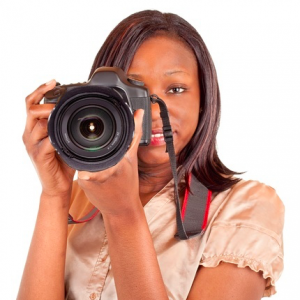Five Things Executives Should Expect From Their Event Photographer

Great photos of you delivering speeches are an excellent addition to your organization’s media kit and crucial for generating publicity. Therefore, it’s important to have high but realistic expectations of an in-house or freelance photographer.
Having regularly worked on both sides of the podium—as a speaker and as a professional event photographer—there are things each should know about the other’s role. Here are five tips on how photographers work, because the more you know the easier it will be to give and get your best shot.
A good event photographer will:
1. Take pictures only during the first few minutes of your speech. Most music venues let in the news media, but only for the first few songs. Event organizers don’t want photographers becoming a distraction throughout the show. It’s a classic phrase: “Three songs, no flash.”
A good photographer will let you start your speech for a moment before she starts shooting. This allows you to get comfortable at the lectern and establish rapport with your audience. Then the photographer will take pictures from various angles while trying not to draw attention to herself. Then, after a few minutes, she’ll quit. She’ll have what she needs. A good photographer doesn’t need to shoot pictures throughout the speech. It’s distracting. The reason it’s OK at the beginning is that people think, “Oh, there’s a photographer—this is indeed an important event.” This also amps up the excitement of the speaker finally getting up to speak. After the event, most people won’t even remember there was a photographer during the first portion of the speech.
2. Not use flash. There is no reason for a photographer to set off fireworks during your speech. In most cases, a flash turns the heads of the audience so they can find out where the strobe is coming from. It’s reasonable for you or your press agent to let the photographer know beforehand that you wish them to shoot without flash. If you know nothing about photography, you can sound knowledgeable by saying, “Please turn up your I-S-O so you don’t have to use flash.”
3. Deliver the best shots. Amateurs take lots of photos and show them all. A professional takes tons of photos and only shows a few. You’re hiring the photographer not for every shot taken but for the final few edited images she will deliver. Please don’t ask to see the photos on her camera during the event. She’ll edit her finals quickly and deliver them to your press agent after the event is over.
4. Capture you at your best. Most of us look a bit funny when a viewer hits the pause button during a video of our speech. It’s the same for many still photos of speeches. Our mouth is skewed or our eyes might be closed while blinking. But a good photographer will take many photos of your speech and deliver the best finals. Your mouth will be open without your tongue flailing, the microphone won’t look like it’s coming out of your nose, and there won’t be a flagpole or tree sticking out of your head. You will look good, polished, professional, in-charge and “executive.”
But if you aren’t pleased with the photos shot by a good photographer, please know that this is indeed how you appear. If you wish to appear differently, try practicing in front of a mirror. Smile, and pause a bit longer after each phrase or sentence. Better yet, hire a speech coach or image consultant. Research proves the value of effective executive speeches as it can relate to a company’s share price.
I once watched a video of myself delivering a speech. I didn’t look like I was enjoying it, even though I was making the audience laugh repeatedly. Since then I’ve made a conscious effort to smile more—the way I truly feel when making people laugh—instead of channeling all my focus into the content of my speech.
5. Charge a fair price. Depending on your region, and the photographer’s level of skill and experience, you should expect to pay the photographer at least $100 per hour, with the first hour being much more. Photography isn’t cheap, and it’s important to recognize what your PR department is paying for when they hire a freelancer: time shooting, time editing, time traveling, use of camera and lenses, the use of computer and photo editing software, and most importantly, the photographer’s training. Oh sure, this is an age in which everyone has a decent camera on their phone, but for high-profile events would you risk just handing your phone to your administrative assistant before your speech? You need someone who is worthy of a high-end camera and lens—someone with a trained eye. That is ultimately why you and your PR department will invest in a professional—so you can capture the best version of yourself when representing your organization.
Go out and look your best, and do what it takes to get photographed looking your best. It’s an investment in you and your cause, and that’s worth it.
—Ansel Oliver is a manager for special projects at SnappConner PR.
